Artificial Intelligence is revolutionizing everything—from how we search online to how we write. But with this growing influence comes a challenge: how can we tell whether content was created by a human or an AI? That’s where AI detection steps in.
Let’s explore what AI detection is, why it matters, how it works, and the best tools out there to identify AI-written content.
What is AI Detection?
A Simple Explanation
AI detection is the process of analyzing content to determine whether it was created by an AI or a human. It uses algorithms to scan text for certain patterns and characteristics typical of machine-generated language.
Why It’s Gaining Popularity
With AI tools like ChatGPT, Jasper, and Writesonic making content creation super easy, there’s been a rise in AI-generated text in blogs, essays, and even job applications. This raises concerns about originality, ethics, and truthfulness.

Why We Need AI Detection
Academic Integrity
Teachers and schools want to ensure students are doing their own work. AI detect helps catch AI-written assignments that break academic rules.
Content Authenticity
Brands and blogs rely on trust. AI detect helps businesses verify that articles, reviews, or ads are human-written or appropriately disclosed if AI-assisted.
Security and Fraud Prevention
AI-generated content can be used in scams, phishing emails, and fake profiles. Detecting such content early can protect people and businesses.
How AI Detection Works
Analyzing Writing Patterns
AI-generated text tends to follow certain patterns: overly formal tone, lack of personal anecdotes, and super smooth sentence flow. Detection tools look for these markers.
Natural Language Models
Detection tools often compare submitted text to known AI language patterns derived from models like GPT-3 and GPT-4.
Probability and Token Distribution
They calculate how likely it is that each word or phrase appears, based on training data from large language models. Unusually “perfect” predictability is a red flag.

Types of AI Detection Tools
Free AI Detect Tools
Platforms like GPTZero and Copyleaks offer limited free versions that are good for basic checks.
Paid AI Detection Services
Advanced users may opt for subscription-based platforms that offer deeper analysis and API integrations.
Browser Extensions and Plugins
Some AI detect tools are available as Chrome extensions—great for real-time checking of web content.
Best AI Detection Tools in 2025
GPTZero
One of the most accurate tools for educators. It gives a “likely AI,” “likely human,” or “mixed” verdict.
Copyleaks AI Detector
Widely used in academia and journalism. Offers in-depth reports on AI probability.
Turnitin AI Detector
Integrated into popular plagiarism software. It detects both plagiarism and AI involvement.
Writer.com AI Content Detector
Simple to use, and perfect for marketers checking content before publishing.
OpenAI Classifier
Though now retired, it was one of the first tools to officially detect AI-written content.
Who Uses AI Detection and Why
Teachers and Educators
To ensure students are meeting learning goals without relying on AI for shortcuts.
Content Creators and Businesses
To maintain a human tone, avoid penalties from Google, and ensure authentic messaging.
Recruiters and HR Teams
AI detect helps identify whether a cover letter or resume was AI-written, ensuring fair evaluation.

Limitations of AI Detection
False Positives and Negatives
AI detectors aren’t perfect. Sometimes, human content is wrongly flagged. Other times, AI-written text slips through undetected.
Evasion Techniques by AI Tools
Writers can tweak AI content manually to make it look more “human” and fool detectors. This creates a cat-and-mouse game.
Is AI Detection Always Accurate?
No, it’s not 100% foolproof. AI detect works best as a guideline, not a definitive judgment. It’s wise to combine it with human review.
Can You Bypass AI-Detection?
Ethical Considerations
Sure, it’s technically possible to edit AI content and dodge detection. But ethically, it’s a gray area, especially in academic and professional settings.
Risks of Manipulating AI Outputs
Trying to game the system could backfire—whether it’s getting caught at school or losing credibility at work.
The Future of AI Detection
As AI models get smarter, so will detection tools. Expect future AI detect to include multi-language support, image and voice recognition, and even real-time verification for live content.
The arms race between AI creation and AI detection is just beginning—and it’s going to be an exciting one.
In a world where AI content is becoming the norm, AI detection serves as a crucial line of defense. Whether you’re a teacher, business owner, or just curious about what’s real and what’s not, understanding and using AI detection tools gives you an edge.
AI is here to stay, but so is the need for authenticity. The more we embrace AI detection, the better we’ll be at keeping things transparent, fair, and trustworthy.
FAQs About The AI Detection
Can AI detection spot all AI-generated content?
Not always. It’s highly accurate but not flawless. Some advanced edits can bypass detection.
Is AI detection legal?
Yes, absolutely. It’s simply a tool for analysis and doesn’t violate any rights.
Are free AI detection tools reliable?
Yes, to an extent. They’re great for casual use, but paid tools offer deeper insights.
What’s the best AI detection tool in 2025?
GPTZero and Copyleaks remain industry favorites for their accuracy and ease of use.
Can human-written content be flagged by mistake?
Yes, false positives can happen, especially with formal or structured writing. Always review flagged content carefully.

https://t.me/s/Webs_1win
https://t.me/s/Webs_1win